Freestanding Baths Buying Guide

Of all the latest trends in bathroom design, the freestanding bath appears to have the greatest appeal. Gone are the days when you needed an acre-sized bathroom and a trust fund to own one. The undeniable beauty and glamour they bring to your bathroom is clear, but when it comes to buying one, you want to make sure you know your stuff.
This freestanding bath buying guide can answer the most frequently asked questions you may have before purchasing, and provide you with everything you need to know.
- What is A Freestanding Bath?
- Freestanding Bath Trends – Contemporary or Traditional?
- Freestanding Bath Materials
- Freestanding Baths Pros and Cons
- Can You Put A Shower Over A Freestanding Bath?
- Plumbing and Waste
- Price of Freestanding Baths
- Further Freestanding Bathtub Guides and Advice
What is A Freestanding Bath?
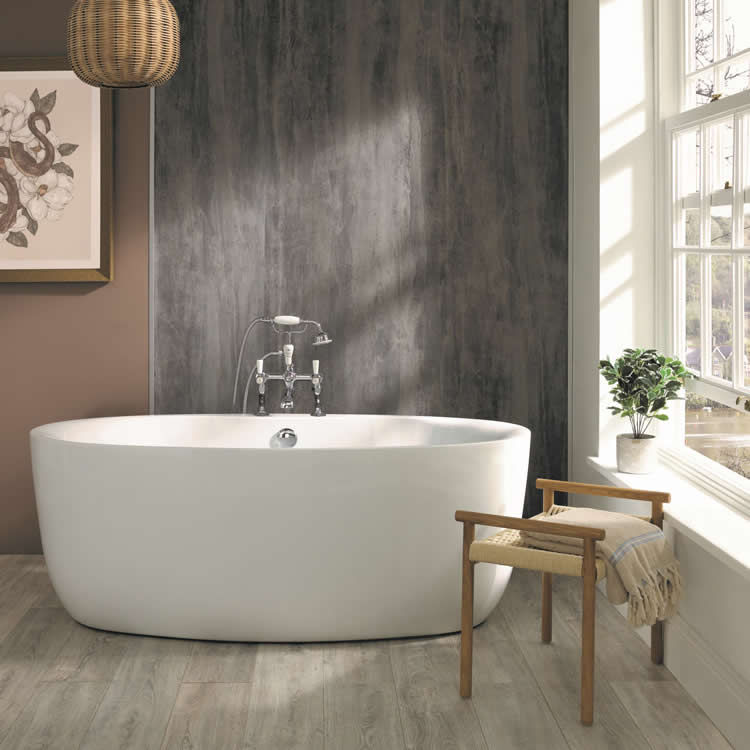
A freestanding bath stands alone in your bathroom without being attached to a supporting wall structure. They usually sit directly on the floor or are mounted on feet, making a great centrepiece in any bathroom design.
You might envisage a freestanding bath as the focal point of a bathroom with oodles of space around it. This is true of certain sized bathrooms, but with a huge variety of sizes and styles now available, space is no longer an issue. While they do make a stunning showpiece, you are afforded the freedom to dictate how you want it to impact your bathroom design.
Without the restrictions of having to be up against the wall or tucked away in a corner, the structure of your freestanding bath can be whatever suits you and your family. It can be narrow and shallow for young kids, or deep and wide if you prefer a long relaxing soak in the tub after work.
Freestanding Bath Trends – Contemporary or Traditional?
Stand alone baths tend to fall within two camps: traditional freestanding baths and contemporary freestanding bathtubs. This is by no means a rigid definition, as some baths have elements of both within their design.
Traditional freestanding baths have that classic feel about them and include popular styles such as slipper baths and roll top baths. The classic feel is further enhanced by supporting claw feet, better suited to a traditional bathroom design.
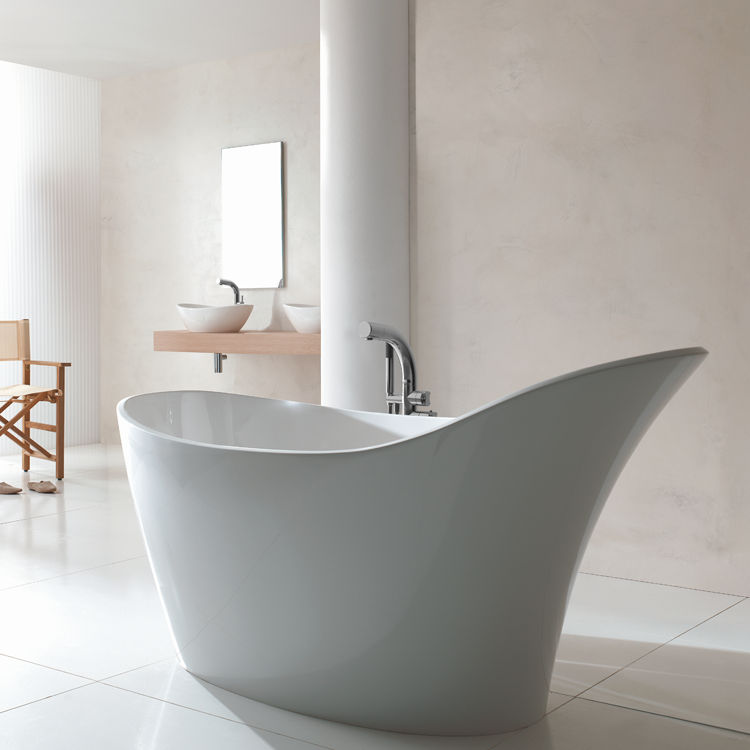
Slipper baths are characterised by their shape, with one end being higher than the other. A more modern take on the slipper bath allows the bath to rest directly onto the floor, creating a seamless structure allowing for a more contemporary feel.
Roll top baths, as the name suggests, feature a curved roll or lip as a design feature at the top of the bath. Unlike the slipper bath, both ends tend to be of equal height.
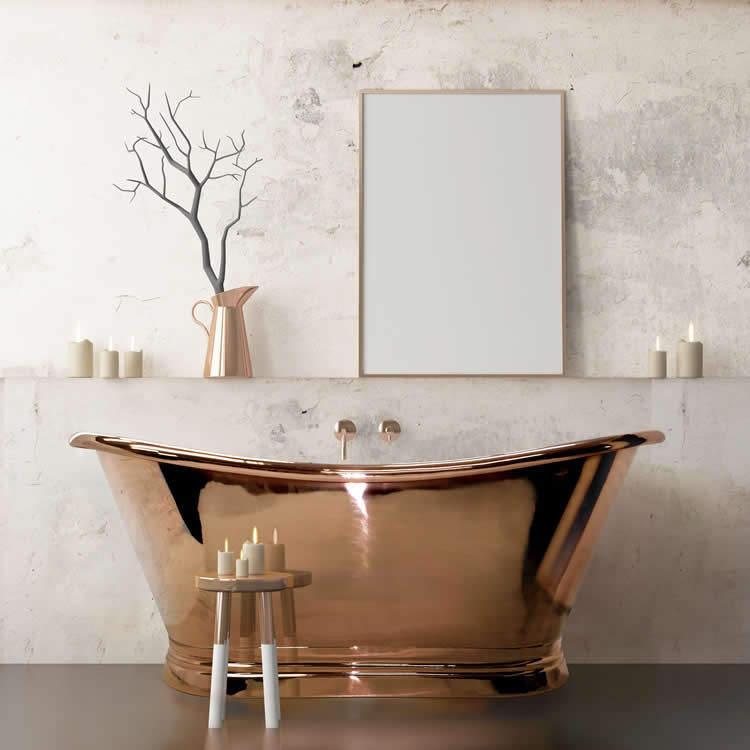
Contemporary freestanding baths feature outstanding curves, smooth lines and a clean, minimalist design, the kind of bath that you would expect to see in a luxury hotel or spa retreat. The simplicity of the design aids a feeling of tranquillity and relaxation. Rolltop baths with a modern design feature more extravagant shapes and added creativity, a freestanding bath trend increasing in popularity.
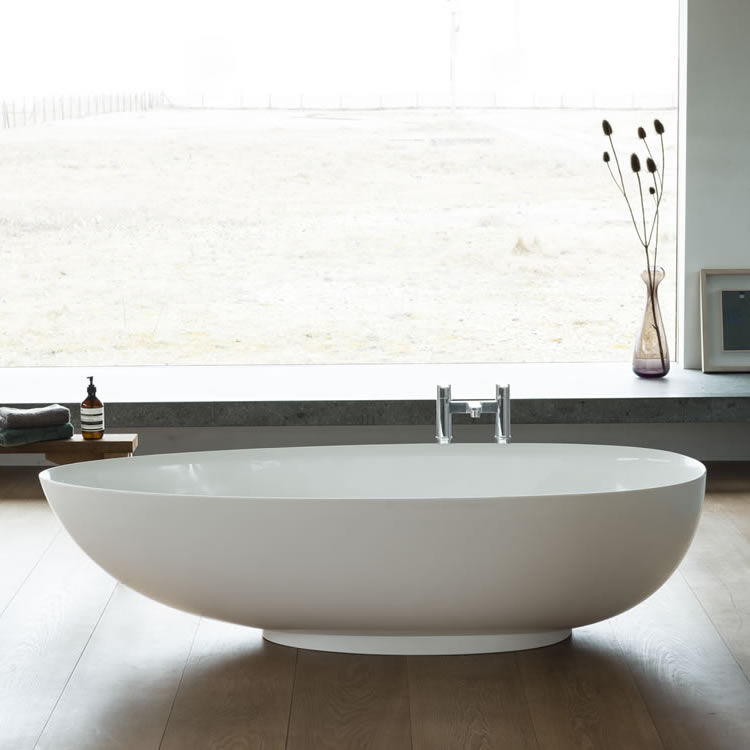
You can find out more about the shapes and sizes of freestanding bath in our Understanding Bath Sizes guide here.
Freestanding Bath Materials
Historically, copper and natural stone were the primary popular materials for freestanding baths, now they are more prominently used for high-end luxury. Today, there are three popular choices: acrylic, stone resin or steel. There are different advantages to each, but ultimately it comes down to which you feel best fits your dream bathroom design.
Acrylic Freestanding Baths
Acrylic baths are a common feature in modern bathrooms and this is for a number of reasons. The material is more affordable than other options and it is easily maintained. An added bonus to using acrylic is that it is excellent at absorbing and retaining heat, making it perfect for anyone who likes a lengthy relax in the tub, while reducing the energy use of taking a bath.
Stone Resin Freestanding Baths
Made from a mixture of resin and ground stone, usually quartz or granite, the composite bath gives you so many styles and designs to choose from. You can opt for a natural look or choose a colour that fits your bathroom design, the outstanding look of a composite freestanding bath is what makes this material unique. As well as a stunning exterior, stone freestanding baths are durable and affordable.
QuarryCast™ Freestanding Baths
A unique material QuarryCast™ is made from finely ground Volcanic Limestone™ mixed with resin and is a material unique to Victoria and Albert Freestanding Baths. It retains heat well and the limestone delivers a beautiful natural look. It is a composite material but deserves a special mention for the glossy look and exceptional strength to weight ratio it provides.
Steel Freestanding Baths
Steel baths are a more contemporary version of the old iron bathtubs. Their thick porcelain enamel coating means they retain the classic look but are lighter in weight making them suitable for installation upstairs. Although they look great, steel is not the best at retaining heat. If you like a long bath, another option may be more suited.
Freestanding Baths Pros and Cons
If you are unsure whether a freestanding bath is best for you, here are a list of the pros and cons:
Pros
- Due to the fact they can be placed anywhere in your bathroom, there is no limit when it comes to style or design. You can choose the perfect bath for you and your family without worrying about space.
- It has a unique look and adds a luxurious feel to your bathroom. Often used in high-end hotels and spas, a freestanding bath is a focal point for a stunning bathroom design.
- With no need to be connected to walls, installing a freestanding bath is quick and easy.
- You are free to place a freestanding bath anywhere in your bathroom. This gives you total freedom to fit your bath into the design of the room. Do you want it under a skylight, or facing out the window for a beautiful view? No problem.
- Freestanding bathtubs can be moved around – so if you feel like changing the layout of your bathroom, this is a useful benefit.
Cons
- Freestanding baths are generally more expensive than built-in tubs, even when installation is considered. This is because they are more complex and usually of more luxury design.
- Freestanding baths are much heavier than built-in baths, sometimes requiring a reinforced floor which adds to the cost. Particularly for freestanding baths made from stone or metal materials.
- Storage can be an issue for freestanding baths. The go-to ledge at the corner of a built-in bath for your shampoos and soaps simply does not exist on a freestanding model. You can avoid this issue if you purchase a rolling caddie.
- Freestanding baths are usually much bigger than built-in baths. This can be a problem when trying to navigate it into the right spot in your bathroom. Some are even too tall to lean over the side, making bathing a child or pet difficult.
If you want to discuss whether a freestanding bath is the right option for you and your bathroom, why not get in touch with our team and they will be more than happy to help you.
Can You Put A Shower Over A Freestanding Bath?
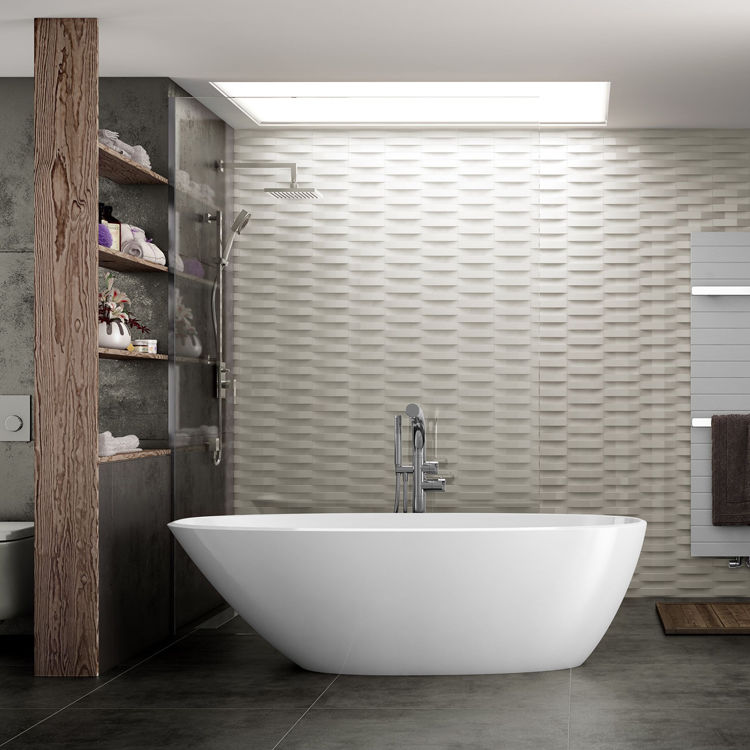
If you are looking to combine the best of both worlds by having both a shower and freestanding bath, then a freestanding shower bath is a must-have for a bathroom space. These baths feature a straight-edge at one side, ideal for fitting against a wall, and enclosed by a shower screen to protect against splashing. The other end features a single-ended bathing side, perfect for those who like to soak and relax. This design allows you to pair any one of these bathtubs with your ideal shower system.
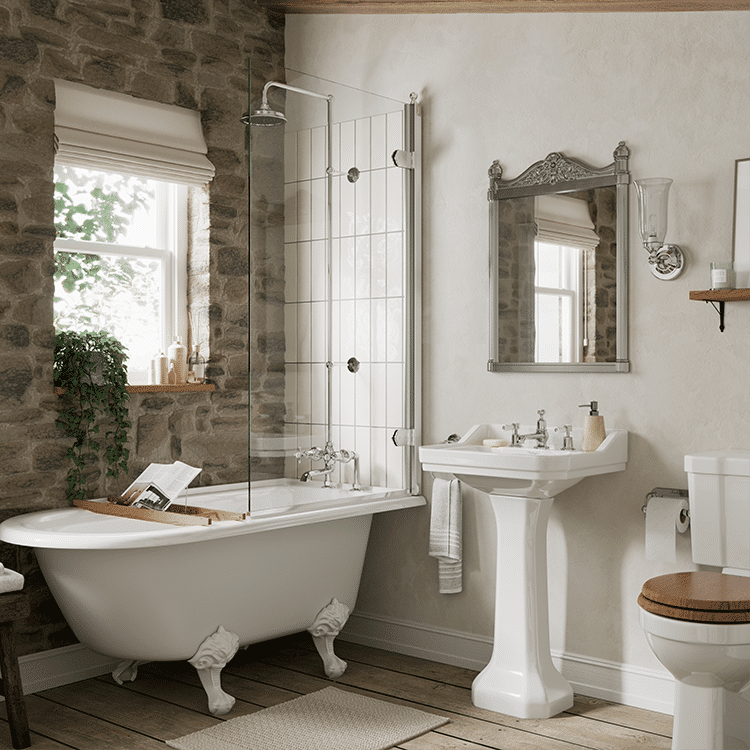
However, if it is a freestanding bath that isn't designed for showering that has caught the eye, then it becomes a matter of practicality and location. Firstly, one of major USPs of a freestanding bath is the ability to install it in anywhere in a room, whereas trying to pair it with any kind of shower system is going to limit the location to close proximity to walls taking away this benefit. In addition to this, as the design isn't necessarily built for showering, it is unlikely to have any protection against leaking or splashing from a shower, which means potentially spoiling the aesthetic of the bath and wider space through the installation of a shower curtain that may not necessarily be possible for the shape or size of the bath.
Nevertheless, there is a compromise in that many freestanding bath taps come with a shower handset, ideal for rinsing and hair-washing. This is also the case for wall-mounted bath taps, which makes them ideal for certain types of freestanding baths like back to wall baths for a modern and comtemporary look.
Plumbing and Waste
Another issue to consider before even purchasing a freestanding bath is whether or not the installation of the bath is part of a complete remodel of the bathroom or whether it is a re-fit.
If it is a complete remodel of the bathroom then during the planning stages steps can and should be taken to accommodate the necessary plumbing and waste concerns.
If the freestanding bath is intended to replace a standard bathtub then the implications of moving the waste system has to be given greater consideration. Unlike with a standard bath fitting where the waste system is housed underneath the bath, a freestanding bath installation has the waste system housed below floor level, unless the bath itself comes with a void space for waste fitting.
Price of Freestanding Baths
Generally freestanding baths cost more than built-in baths – but their price varies depending on the brand, design and material. Our range here at Sanctuary Bathrooms has both affordable and more luxury models. If you are looking to price up the cost, then view our range of freestanding baths to see the flexibility in price, size and other features.
Further Freestanding Bathtub Guides and Advice
Ultimately, the decision is up to you. If you are looking for a stunning new bath and installation is not a problem, then a freestanding bath might be best for you. Choosing a freestanding bath gives you more freedom to dictate the style and positioning of your new tub, helping you achieve that dream bathroom design.
Want to know how we can help with your bathroom design? Our Design and Planning Team will be happy to help create your perfect bathroom space. Get in touch today!